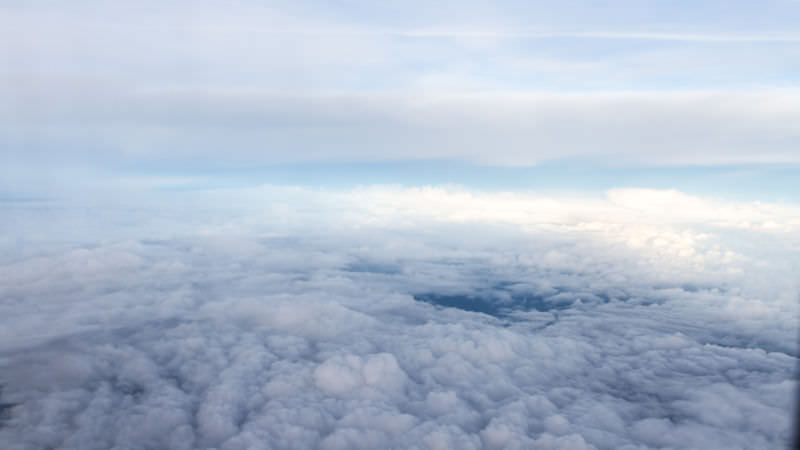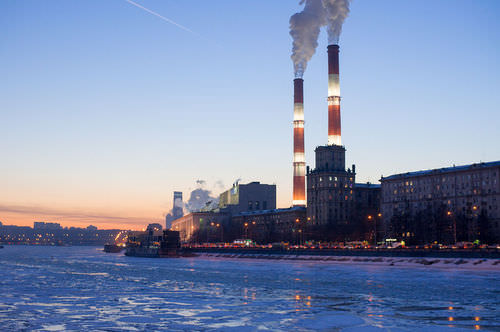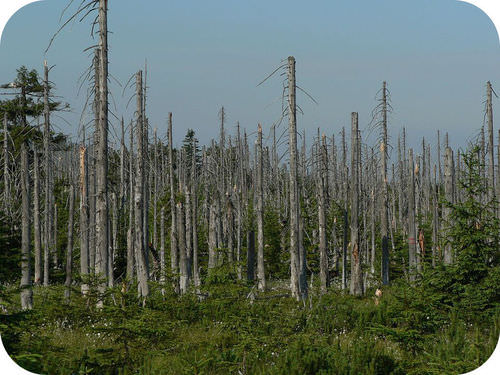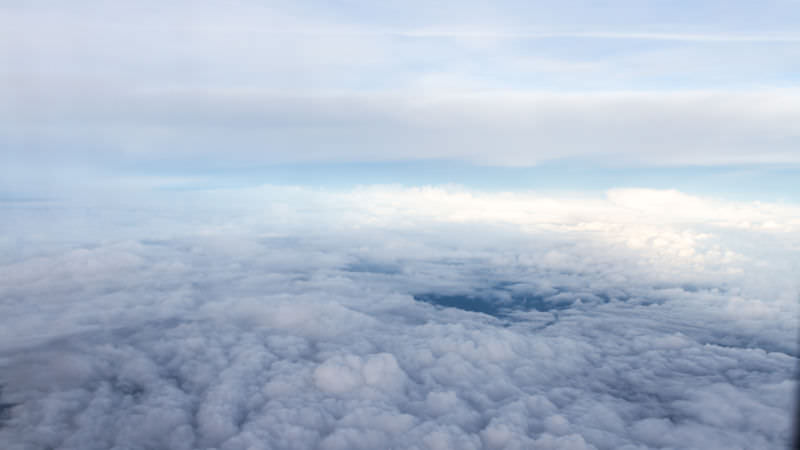6.21: Air Pollution
- Page ID
- 12155
\( \newcommand{\vecs}[1]{\overset { \scriptstyle \rightharpoonup} {\mathbf{#1}} } \)
\( \newcommand{\vecd}[1]{\overset{-\!-\!\rightharpoonup}{\vphantom{a}\smash {#1}}} \)
\( \newcommand{\dsum}{\displaystyle\sum\limits} \)
\( \newcommand{\dint}{\displaystyle\int\limits} \)
\( \newcommand{\dlim}{\displaystyle\lim\limits} \)
\( \newcommand{\id}{\mathrm{id}}\) \( \newcommand{\Span}{\mathrm{span}}\)
( \newcommand{\kernel}{\mathrm{null}\,}\) \( \newcommand{\range}{\mathrm{range}\,}\)
\( \newcommand{\RealPart}{\mathrm{Re}}\) \( \newcommand{\ImaginaryPart}{\mathrm{Im}}\)
\( \newcommand{\Argument}{\mathrm{Arg}}\) \( \newcommand{\norm}[1]{\| #1 \|}\)
\( \newcommand{\inner}[2]{\langle #1, #2 \rangle}\)
\( \newcommand{\Span}{\mathrm{span}}\)
\( \newcommand{\id}{\mathrm{id}}\)
\( \newcommand{\Span}{\mathrm{span}}\)
\( \newcommand{\kernel}{\mathrm{null}\,}\)
\( \newcommand{\range}{\mathrm{range}\,}\)
\( \newcommand{\RealPart}{\mathrm{Re}}\)
\( \newcommand{\ImaginaryPart}{\mathrm{Im}}\)
\( \newcommand{\Argument}{\mathrm{Arg}}\)
\( \newcommand{\norm}[1]{\| #1 \|}\)
\( \newcommand{\inner}[2]{\langle #1, #2 \rangle}\)
\( \newcommand{\Span}{\mathrm{span}}\) \( \newcommand{\AA}{\unicode[.8,0]{x212B}}\)
\( \newcommand{\vectorA}[1]{\vec{#1}} % arrow\)
\( \newcommand{\vectorAt}[1]{\vec{\text{#1}}} % arrow\)
\( \newcommand{\vectorB}[1]{\overset { \scriptstyle \rightharpoonup} {\mathbf{#1}} } \)
\( \newcommand{\vectorC}[1]{\textbf{#1}} \)
\( \newcommand{\vectorD}[1]{\overrightarrow{#1}} \)
\( \newcommand{\vectorDt}[1]{\overrightarrow{\text{#1}}} \)
\( \newcommand{\vectE}[1]{\overset{-\!-\!\rightharpoonup}{\vphantom{a}\smash{\mathbf {#1}}}} \)
\( \newcommand{\vecs}[1]{\overset { \scriptstyle \rightharpoonup} {\mathbf{#1}} } \)
\( \newcommand{\vecd}[1]{\overset{-\!-\!\rightharpoonup}{\vphantom{a}\smash {#1}}} \)
\(\newcommand{\avec}{\mathbf a}\) \(\newcommand{\bvec}{\mathbf b}\) \(\newcommand{\cvec}{\mathbf c}\) \(\newcommand{\dvec}{\mathbf d}\) \(\newcommand{\dtil}{\widetilde{\mathbf d}}\) \(\newcommand{\evec}{\mathbf e}\) \(\newcommand{\fvec}{\mathbf f}\) \(\newcommand{\nvec}{\mathbf n}\) \(\newcommand{\pvec}{\mathbf p}\) \(\newcommand{\qvec}{\mathbf q}\) \(\newcommand{\svec}{\mathbf s}\) \(\newcommand{\tvec}{\mathbf t}\) \(\newcommand{\uvec}{\mathbf u}\) \(\newcommand{\vvec}{\mathbf v}\) \(\newcommand{\wvec}{\mathbf w}\) \(\newcommand{\xvec}{\mathbf x}\) \(\newcommand{\yvec}{\mathbf y}\) \(\newcommand{\zvec}{\mathbf z}\) \(\newcommand{\rvec}{\mathbf r}\) \(\newcommand{\mvec}{\mathbf m}\) \(\newcommand{\zerovec}{\mathbf 0}\) \(\newcommand{\onevec}{\mathbf 1}\) \(\newcommand{\real}{\mathbb R}\) \(\newcommand{\twovec}[2]{\left[\begin{array}{r}#1 \\ #2 \end{array}\right]}\) \(\newcommand{\ctwovec}[2]{\left[\begin{array}{c}#1 \\ #2 \end{array}\right]}\) \(\newcommand{\threevec}[3]{\left[\begin{array}{r}#1 \\ #2 \\ #3 \end{array}\right]}\) \(\newcommand{\cthreevec}[3]{\left[\begin{array}{c}#1 \\ #2 \\ #3 \end{array}\right]}\) \(\newcommand{\fourvec}[4]{\left[\begin{array}{r}#1 \\ #2 \\ #3 \\ #4 \end{array}\right]}\) \(\newcommand{\cfourvec}[4]{\left[\begin{array}{c}#1 \\ #2 \\ #3 \\ #4 \end{array}\right]}\) \(\newcommand{\fivevec}[5]{\left[\begin{array}{r}#1 \\ #2 \\ #3 \\ #4 \\ #5 \\ \end{array}\right]}\) \(\newcommand{\cfivevec}[5]{\left[\begin{array}{c}#1 \\ #2 \\ #3 \\ #4 \\ #5 \\ \end{array}\right]}\) \(\newcommand{\mattwo}[4]{\left[\begin{array}{rr}#1 \amp #2 \\ #3 \amp #4 \\ \end{array}\right]}\) \(\newcommand{\laspan}[1]{\text{Span}\{#1\}}\) \(\newcommand{\bcal}{\cal B}\) \(\newcommand{\ccal}{\cal C}\) \(\newcommand{\scal}{\cal S}\) \(\newcommand{\wcal}{\cal W}\) \(\newcommand{\ecal}{\cal E}\) \(\newcommand{\coords}[2]{\left\{#1\right\}_{#2}}\) \(\newcommand{\gray}[1]{\color{gray}{#1}}\) \(\newcommand{\lgray}[1]{\color{lightgray}{#1}}\) \(\newcommand{\rank}{\operatorname{rank}}\) \(\newcommand{\row}{\text{Row}}\) \(\newcommand{\col}{\text{Col}}\) \(\renewcommand{\row}{\text{Row}}\) \(\newcommand{\nul}{\text{Nul}}\) \(\newcommand{\var}{\text{Var}}\) \(\newcommand{\corr}{\text{corr}}\) \(\newcommand{\len}[1]{\left|#1\right|}\) \(\newcommand{\bbar}{\overline{\bvec}}\) \(\newcommand{\bhat}{\widehat{\bvec}}\) \(\newcommand{\bperp}{\bvec^\perp}\) \(\newcommand{\xhat}{\widehat{\xvec}}\) \(\newcommand{\vhat}{\widehat{\vvec}}\) \(\newcommand{\uhat}{\widehat{\uvec}}\) \(\newcommand{\what}{\widehat{\wvec}}\) \(\newcommand{\Sighat}{\widehat{\Sigma}}\) \(\newcommand{\lt}{<}\) \(\newcommand{\gt}{>}\) \(\newcommand{\amp}{&}\) \(\definecolor{fillinmathshade}{gray}{0.9}\)
Why is the atmosphere important?
Well, it contains all of the air that we breathe. The atmosphere also has other roles and functions, so when we interfere with the atmosphere, we interfere with some important biological processes. And this can have consequences.
The Atmosphere
The atmosphere plays an important part in maintaining Earth’s freshwater supply. It is part of the water cycle. It refills lakes and rivers with precipitation. The atmosphere also provides organisms with gases needed for life. It contains oxygen for cellular respiration and carbon dioxide for photosynthesis.
Air Pollution
 Air pollution comes from many sources, including waste expelled into the atmosphere by numerous factories.
Air pollution comes from many sources, including waste expelled into the atmosphere by numerous factories.Earth’s atmosphere is vast. However, it has been seriously polluted by human activities. Air pollution consists of chemical substances and particles released into the atmosphere, mainly by human actions. The major cause of outdoor air pollution is the burning of fossil fuels. Power plants, motor vehicles, and home furnaces all burn fossil fuels and contribute to the problem (see Table below). Ranching and using chemicals such as fertilizers also cause air pollution. Erosion of soil in farm fields and construction sites adds dust particles to the air as well. Fumes from building materials, furniture, carpets, and paint add toxic chemicals to indoor air.
| Pollutant | Example/Major Source | Problem |
|---|---|---|
| Sulfur oxides (SOx) | Coal-fired power plants | Acid Rain |
| Nitrogen oxides (NOx) | Motor vehicle exhaust | Acid Rain |
| Carbon monoxide (CO) | Motor vehicle exhaust | Poisoning |
| Carbon dioxide (CO2) | All fossil fuel burning | Global Warming |
| Particulate matter (smoke, dust) | Wood and coal burning | Respiratory disease, Global Dimming |
| Mercury | Coal-fired power plants, medical waste | Neurotoxicity |
| Smog | Coal burning | Respiratory problems; eye irritation |
| Ground-level ozone | Motor vehicle exhaust | Respiratory problems; eye irritation |
In humans, air pollution causes respiratory and cardiovascular problems. In fact, more people die each year from air pollution than automobile accidents. Air pollution also affects ecosystems worldwide by causing acid rain, ozone depletion, and global warming. Ways to reduce air pollution from fossil fuels include switching to nonpolluting energy sources (such as solar energy) and using less energy. What are some ways you could use less energy?
Acid Rain
All life relies on a relatively narrow range of pH, or acidity. That’s because protein structure and function are very sensitive to pH. Air pollution can cause precipitation to become acidic. Nitrogen and sulfur oxides, mainly from motor vehicle exhaust and coal burning, create acids when they combine with water in the air. The acids lower the pH of precipitation, forming acid rain. If acid rain falls on the ground, it may damage soil and soil organisms. If it falls on plants, it may kill them (see Figure below). If it falls into lakes, it lowers the pH of the water and kills aquatic organisms.
 Effects of Acid Rain. These trees in a European forest were killed by acid rain.
Effects of Acid Rain. These trees in a European forest were killed by acid rain.Ozone Depletion
There are two types of ozone. You can think of them as bad ozone and good ozone. Both are affected by air pollution.
- Bad ozone forms near the ground when sunlight reacts with pollutants in the air. Ground-level ozone is harmful to the respiratory systems of humans and other animals.
- Good ozone forms in a thin layer high up in the atmosphere, between 15 and 35 kilometers above Earth’s surface. This ozone layer shields Earth from most of the sun’s harmful UV radiation. It plays an important role in preventing mutations in the DNA of organisms.
Unfortunately, the layer of good ozone is being destroyed by air pollution. The chief culprits are chlorine and bromine gases. They are released in aerosol sprays, coolants, and other products. Loss of ozone has created an ozone hole over Antarctica. Ozone depletion results in higher levels of UV radiation reaching Earth. In humans, this increases skin cancers and eye cataracts. It also disturbs the nitrogen cycle, kills plankton, and disrupts ocean food webs. The total loss of the ozone layer would be devastating to most life. Its rate of loss has slowed with restrictions on pollutants, but it is still at risk.
Summary
- Air pollution consists of chemical substances and particles released into the air, mainly by human actions.
- The major cause of outdoor air pollution is the burning of fossil fuels.
- Indoor air can also be polluted.
- Air pollution causes acid rain, ozone depletion, and global warming.
Review
- What two environmental effects are mainly associated with the burning of fossil fuels?
- Explain how air pollution is related to acid rain and ozone depletion.
- What benefits does the ozone layer provide?
| Image | Reference | Attributions |
 |
[Figure 1] | Credit: User:Nipik/Wikimedia Commons;Courtesy of Pat Temple, US Forest Service Source: commons.wikimedia.org/wiki/File:Acid_rain_woods1.JPG ; commons.wikimedia.org/wiki/File:Alder_showing_ozone_discolouration.jpg License: CC BY-NC |
 |
[Figure 2] | Credit: Flickr:kishjar Source: http://www.flickr.com/photos/kishjar/12240056764/ License: CC BY 2.0; CC BY-NC 3.0 |
 |
[Figure 3] | Credit: User:Nipik/Wikimedia Commons Source: commons.wikimedia.org/wiki/File:Acid_rain_woods1.JPG License: Public Domain; CC BY-NC 3.0 |

